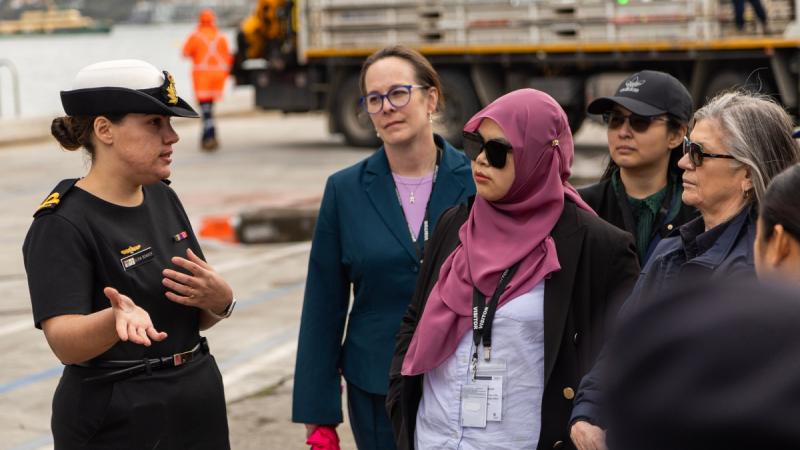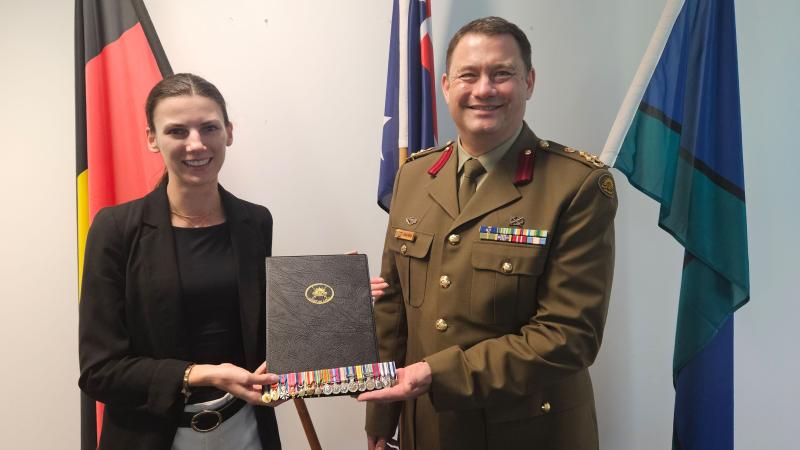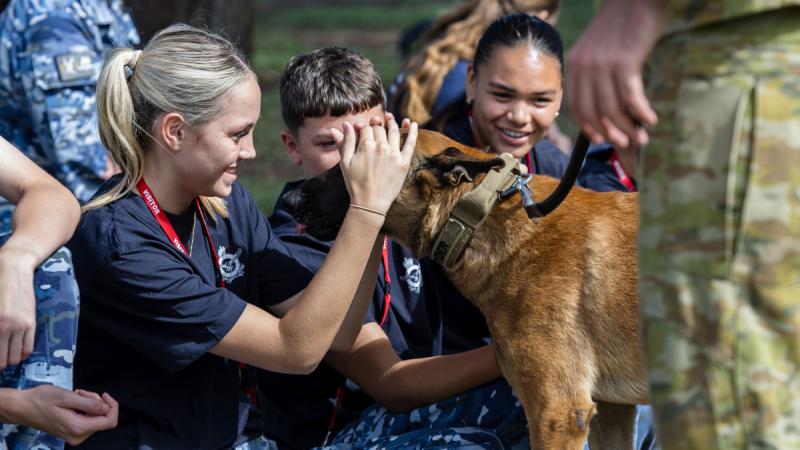26 September 2024
Army veteran Michael Glass credits photography with saving his life.
After 23 years of service as a signaller and achieving the rank of Warrant Officer Class Two, Mr Glass transitioned from full-time ADF service in 2013 and began an eight-year career as a field support representative for a large Defence technology company.
“I don’t know what motivated me to pick up a camera for the first time, but it was in about 2013 that I started to take it seriously,” Mr Glass said.
“I didn’t spend much on a camera, it was just a way to document life, but I took a camera on my last couple of exercises and I was learning to edit before I discharged.”
After spending some time as a reservist, Mr Glass transitioned out of the ADF altogether in 2016 and used his signaller skill set and experience in counter IED (improvised explosive device) to train soldiers in the use of specialist equipment until he was made redundant in 2021.
“I took a break at that point,” Mr Glass said.
“I had a few undiagnosed mental health issues and we didn’t really know what the extent was but the decision was made that I shouldn’t go back to work.”
'I didn’t spend much on a camera, it was just a way to document life, but I took a camera on my last couple of exercises and I was learning to edit before I discharged.'
Mr Glass had been taking photos for more than a decade when he commenced a Diploma in Photography and Digital Imaging at Southbank TAFE in Brisbane in mid-2022, turning a low point in his life into an opportunity to hone his photography skills.
“My photography journey is directly linked to my mental health,” Mr Glass said.
“There are factors like family support, but photography has saved my life.
“Initially it was helping me with healing but now it’s given me purpose.”
With a growing passion for high-contrast monochromatic imagery, Mr Glass reached out to his Defence network in early 2023 to explore the possibility of photographing members of 6th Engineer Support Regiment’s (6ESR) 20th Explosive Ordnance Disposal Squadron (20 EOD) at RAAF Base Amberley, Ipswich.
“Black and white imagery is the original photography,” Mr Glass said.
“You remove the distraction of colour and tell more of the story – that’s what I like about high-contrast monochromatic imagery.
“You see more of the person than you would if the photos were in colour.”
Returning to 20 EOD a decade after being posted to the squadron as a Warrant Officer, Mr Glass photographed Sergeant Damian Dickson and Sapper David Savage for his final assignment at TAFE.
Capturing a series of images under bright lights against a crisp white background, Mr Glass edited the photos into high-contrast monochromatic images and hung them on display at the Southbank TAFE Student Showcase Exhibition held during the Brisbane Photography Festival in mid-2023.
Since then Mr Glass has received multiple awards for those photographs, including first place at the Queensland TAFE Student Photography Exhibition; made the top 10 in The Mono Awards 2023; and was runner-up in the portrait category of Australasia’s Top Emerging Photographers 2024.
'I got to see the humans inside the protective bomb suits and all that carried on to the role I performed at 20 EOD, and my photography ultimately [became] a study of the humanity of soldiers - who are they and what motivates them.'
In appreciation of 20 EOD and its soldiers, Mr Glass donated three of his award-winning photographs from the student exhibition to the squadron.
“My photo series started out as a homage to combat engineers, particularly those who conduct explosive ordnance disposal and search operations,” Mr Glass said.
“While I was on a two-year posting to Canada, I deployed to Afghanistan in 2004, where I worked with an EOD team of Canadian combat engineers in Kabul and provided threat assessment for the EOD technicians.
“I got to see the humans inside the protective bomb suits and all that carried on to the role I performed at 20 EOD, and my photography ultimately [became] a study of the humanity of soldiers – who are they and what motivates them.”
Admitting that making a connection with the subject in the photos is crucial, Mr Glass said being a former soldier gave him a distinct advantage.
“I’m a former soldier and they’re currently serving – they knew I used to work at 20 EOD so making that connection wasn’t really hard.
“Dicko [Sergeant Dickson] the poor bugger; he worked really hard during the shoot.
“I’ve worn an EOD suit before and I know how heavy and hot they are but when I asked him to get into that kneeling position I didn’t realise how difficult it was going to be.
“He did it, though. Good luck to him.”


